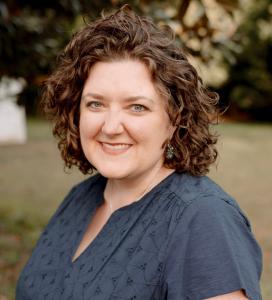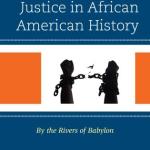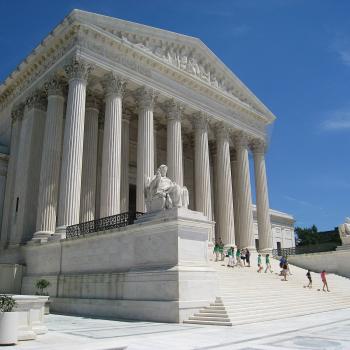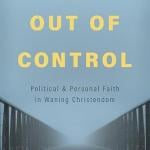Welcome back to the Anxious Bench Dr. Katherine Cooper Wyma! Dr. Wyma is an Associate Professor of English at Anderson University in South Carolina. She teaches several courses on CS Lewis and JRR Tolkien. Her primary academic interest is in late medieval and early modern lay piety and devotional literature. Currently, she is writing a monograph on theological anthropology in CS Lewis’s and JRR Tolkien’s writings. Find her at https://www.katherinewyma.com/
NPR reporter and author Sarah McCammon opens her recent book Exvangelicals: Loving, Living, and Leaving the White Church recounting a memory she has of being a four year old watching a dramatic reenactment of Jesus’ crucifixion at her family’s church:
“As I watched, something combusted inside, and I felt panic and horror wash over me, pushing out tears. ‘They’re killing him.’ I cried. I remember my parents comforting me from their seats, assuring me that it was only pretend, that the man would be okay—and that while Jesus had suffered and died for us, this man from our congregation would do neither. It wouldn’t be the last time I would sit in a church sanctuary, at once moved and afraid, and unsure what was real” (McCammon, Exvangelicals, 2).
With that opening, McCammon uses her book to weave together a discussion of her own autobiography with American evangelicalism at large. Her account of growing up in Kansas City in the 1980’s and 90’s resonates with what many may have experienced and reading her book at times feels like a “who’s who” of this subculture. McCammon details her own struggles with evangelical Christianity, outlining some of the reasons she and others have left, considering themselves “exvangelicals.”
For McCammon, the memory of the Easter drama has sinister overtones that she then unravels throughout the rest of her book. The drama represents the problematic fears that American evangelicalism has had with a changing culture and any loss of power, either actual or perceived.
“I came to understand that of course the violence I believed I was witnessing on that day was not real. Instead, it was meant to illustrate a deeper reality: that lurking beneath the veneer of our comfortable, suburban, midwestern American lives was a threat so severe that God had to send his only son to brutally suffer and die to save us from it. The blood might be fake, but the danger was not” (McCammon, Exvangelicals, 2).
The reenactment does not symbolize the varying ways that the atonement has been seen by Christians throughout the ages: a way to forgiveness of sins, the ability to choose righteousness, or a spiritual exchange between the Devil and God. Instead, it represents all that McCammon would come to find problematic with the faith she was raised in. In an interview with Jemar Tisby, Sarah McCammon discusses the weighty import added to the play she saw. Her child-mind saw this as a reenactment of just how important it was for her church to be right, to be accurate in all beliefs, and her inability to question those beliefs. For her, this was no longer a reminder of an event or an encouragement as Paul says to “set your mind on things above, not on earthly things” (Col. 3:2, CSB).
Yet as startling and striking as the account of this Easter production is for the reader, these reenactments are not unique to the Midwest region, American evangelicalism, or even Protestantism as a whole. Christians have been performing and watching dramatic reenactments of the birth, life, and death of Jesus for centuries.
During the medieval period these Mystery Plays were popular entertainment that might cover almost any biblical story from Creation to the Last Judgement, including Christ’s passion. Some stories would follow the biblical account closely, and others like the hilarious Second Shepherds Play include extra scenes including complaints about the English weather and a lamb standing in for a baby.
Cycles of dramatic story selections were performed either by traveling actors and troupes (complete with wagons built for special effects) or by townspeople often at the Corpus Christi festival in May or June. Two of the more notable examples of these groupings from the Middle English period were the Chester Cycle and the Wakefield Cycle. Other mystery plays were shown throughout Europe as well, and even now, well-timed visitors to Chester, York, or the German town of Oberammergau can see revivals of these towns’ eponymous plays. (Several famous actors have been in some of these productions, including Dame Judi Dench, who got her start in York, playing Mary the same year she would make her professional debut on the London stage in a performance of Hamlet.)
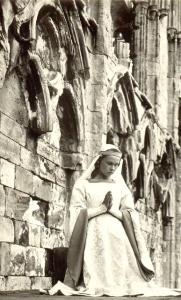
McCammon isn’t alone in seeing these reenactments as having other cultural implications. During the religious tumult of the English 16th century, mystery plays were seen as being intertwined with the Catholic themes of previous centuries, so much so that under Elizabeth I’s reign, they would be outlawed, though the actors and the guilds would protest (John Elliott, Playing God: Medieval Mysteries on the Modern Stage, University of Toronto Press, 1989). More recently James Shapiro has written about antisemitic overtones in the Oberammergau productions (Oberammergau: The Troubling Story of the World’s Most Famous Passion Play, Knopf, 2001).
As a literary scholar, I heartily agree with McCammon that a play or a performance will be affected by and perhaps shape the culture surrounding it. However, it is also important to recognize that for centuries Christians have also taken these reenactments of Christ’s birth, life, death, and resurrection and used them as an act of spiritual reflection and contemplation. Others have seen these as a reminder that Jesus’ story is exactly the opposite of what McCammon saw represented. Instead of using it as a reminder to obtain or reinforce cultural power, these might be reminders to be prepared to follow a suffering Savior. As the creed states “For our sake he was crucified under Pontius Pilate, he suffered death and was buried, and rose again on the third day” (Nicene Creed).


